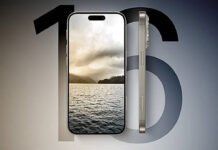Apple’s USB-C Adoption: Apple has always been a trendsetter in the world of technology. From introducing the first-ever smartphone with a multi-touch interface to removing the headphone jack, Apple’s decisions often become industry standards. Now, with the upcoming release of the iPhone 15, the tech giant is set to make another game-changing move by adopting the USB-C port. While this shift is primarily influenced by the European Union’s directive for uniformity in charging solutions, it’s essential to delve deep into what this means for Apple, its loyal consumer base, and the broader tech landscape.
1. A Seamless Ecosystem:
One of the most evident advantages of this transition is the creation of a seamless Apple ecosystem. Imagine the convenience of having a single charging cable for your MacBook, iPad, and iPhone. The interoperability doesn’t end with Apple devices; the USB-C standard extends to many other gadgets, from laptops to headphones, across brands. This universal charging solution promises to declutter lives, reducing the need for multiple cables and adapters.
2. Economic Ramifications:
On the financial front, Apple’s move away from the proprietary Lightning port has significant implications. As highlighted by Bloomberg, the company has, over the years, built a lucrative revenue stream from licensing fees related to the Lightning connector. With the switch to USB-C, this stream might experience a downturn. The vast market of Lightning-based accessories, which has thrived over the last decade, will need to evolve, affecting both manufacturers and Apple’s royalty collections.
3. Engineering Hurdles:
Technological advancements seldom come without challenges. Integrating the USB-C port into the iPhone’s design necessitates a rethinking of its architecture. Both hardware and software components will need recalibration, demanding significant investment in terms of engineering prowess and capital.
4. The Android Conundrum:
Historically, one of Apple’s strengths has been its unique ecosystem, making it harder for users to switch to Android. With USB-C being the standard for most Android devices, this move might inadvertently make it easier for Apple users to cross over, given the shared accessory compatibility. This could pose a challenge for Apple in retaining its consumer base in the long run.
5. Managing Public Perception:
Apple’s history is dotted with moments where major design shifts led to public debates. The introduction of the Lightning port in 2012 and the elimination of the headphone jack in 2016 are testaments to this. With the USB-C transition, Apple risks facing backlash from a segment of its users who might find their existing accessories obsolete overnight.
6. Additional Costs for the End-User:
There’s a monetary angle to this transition for the average consumer. Since Apple decided not to include charging bricks with the iPhone 12 onwards, users with older USB bricks will be pushed to invest in new bricks compatible with USB-C or opt for converter cables. This could be perceived as a hidden cost, potentially souring the brand experience for some.
7. A Step Towards Global Standardization:
On the positive side, Apple’s adoption of USB-C can be seen as a significant stride towards global tech standardization. The European Union’s push for a single charging solution stems from environmental concerns and user convenience. With Apple’s adoption, the tech world moves a step closer to this vision.
8. Reimagining Apple’s Strategy:
It’s crucial to see this shift as part of a broader strategy. Apple’s adaptability has been a cornerstone of its success. Even if the initial response is mixed, Apple’s history suggests they can pivot these changes into new opportunities, potentially shaping the future trajectory of mobile tech.
Conclusion:
Apple’s move to embrace USB-C is emblematic of the company’s continuous evolution. While challenges are imminent, the long-term benefits—for the brand and its users—might outweigh the immediate hurdles. The tech community, competitors, and consumers will keenly observe the ripple effects of this decision, reinforcing Apple’s position as an industry bellwether. With over 600 million iPhones in use globally, this transition is not just about a charging port; it’s about redefining the future of mobile technology.
Read Next > India’s G20 Presidency































